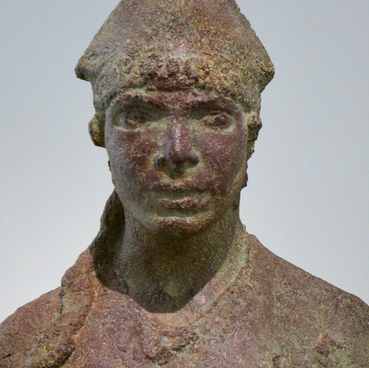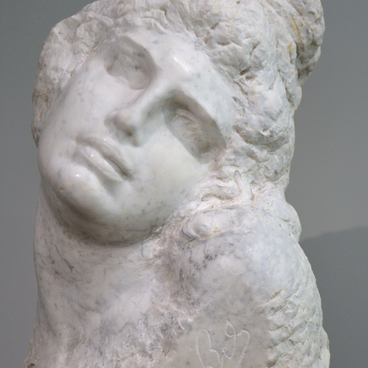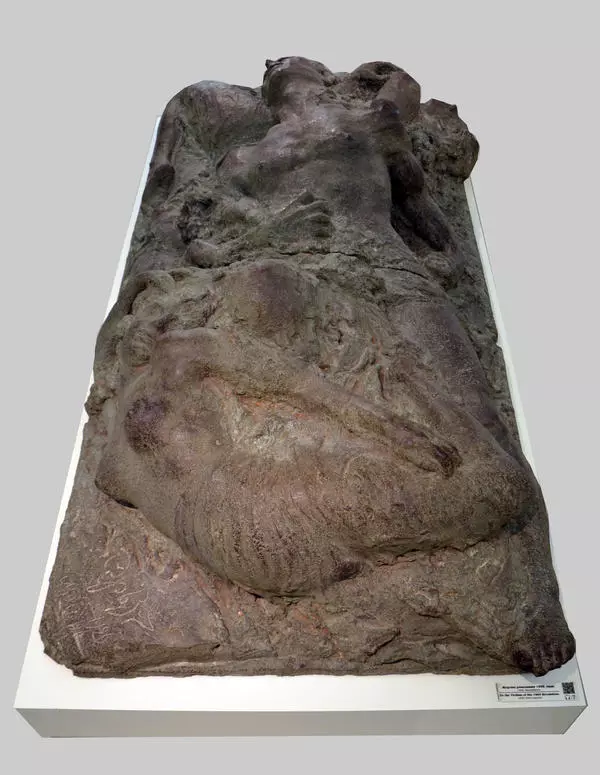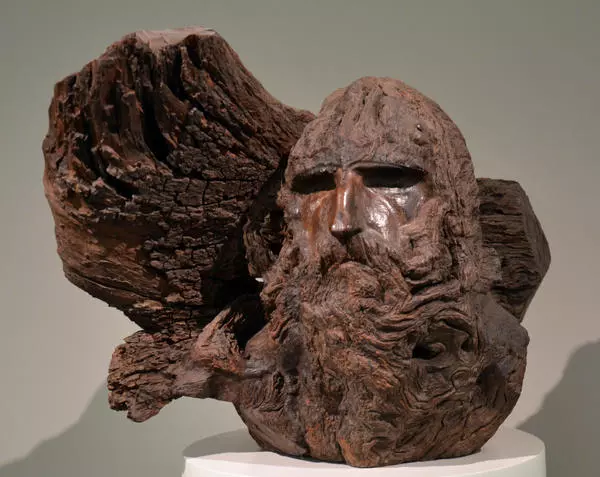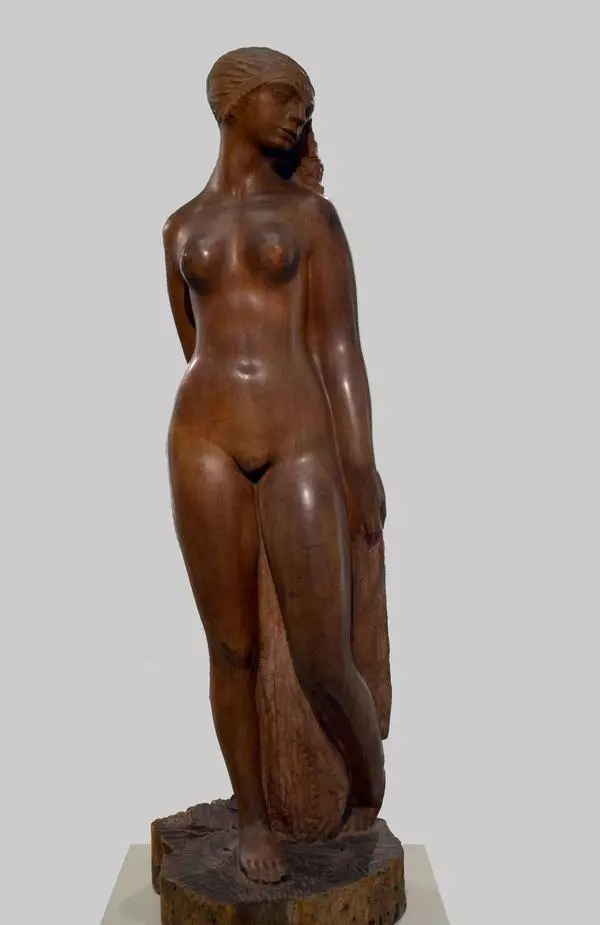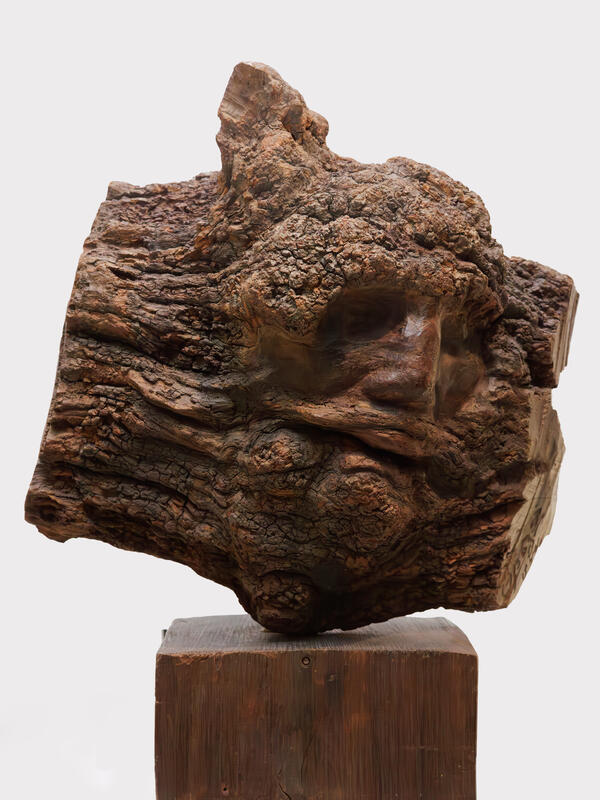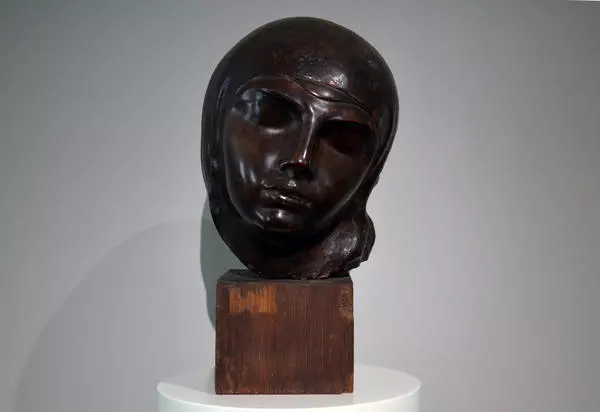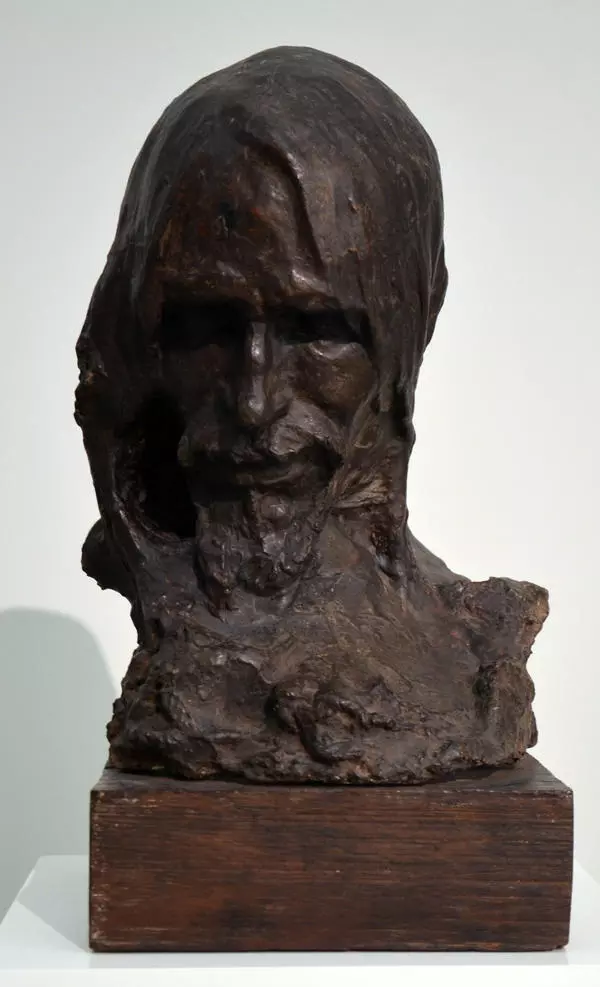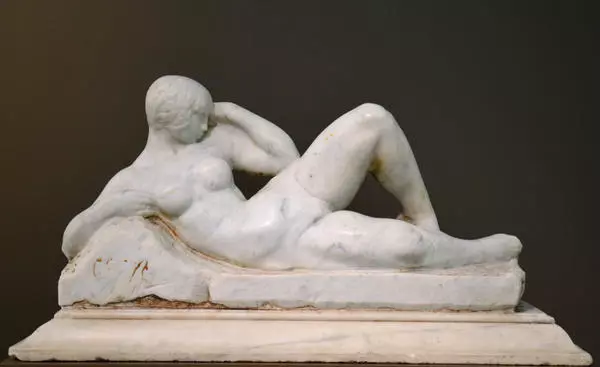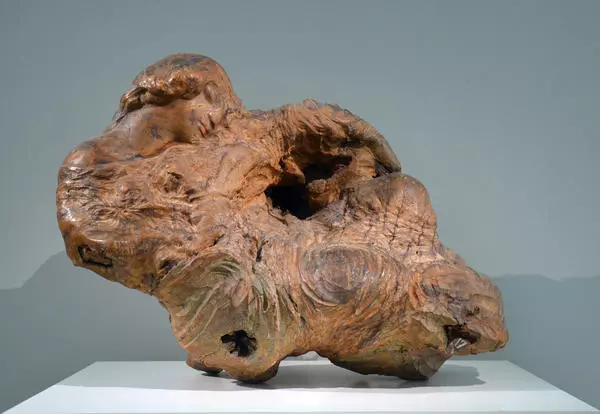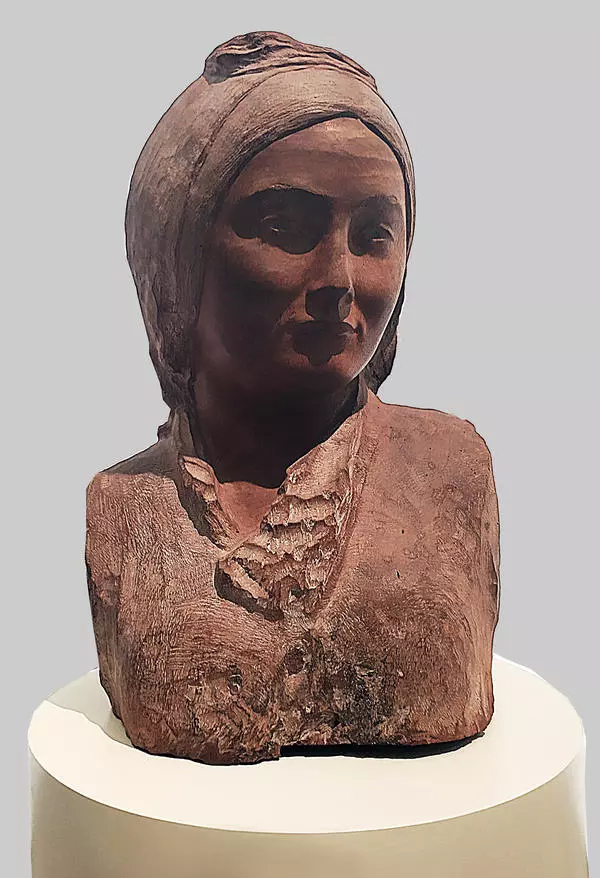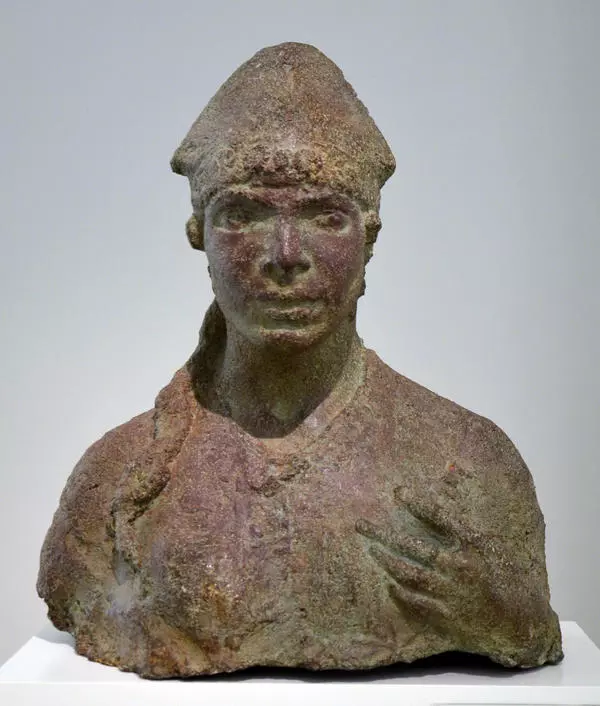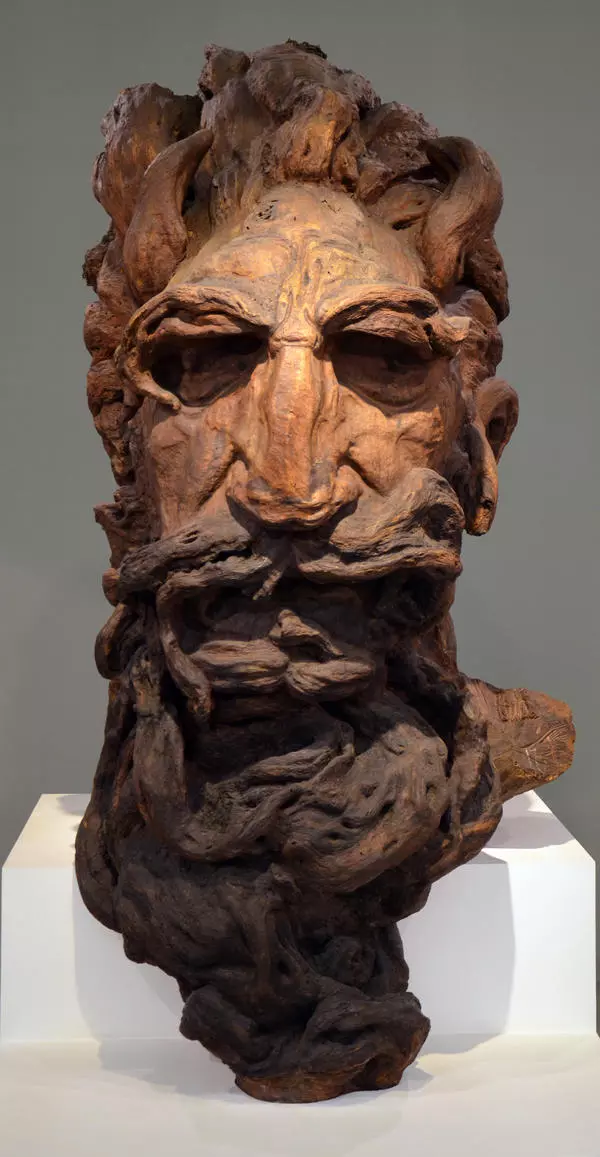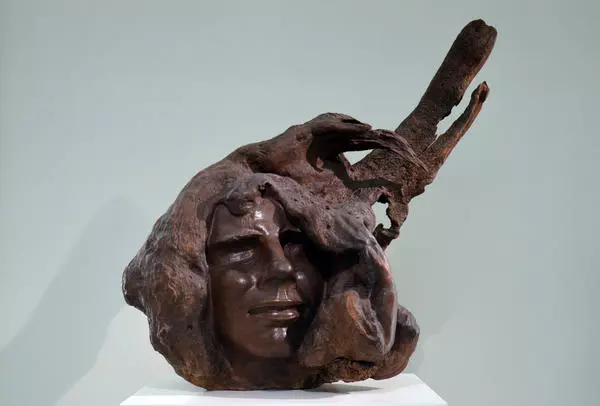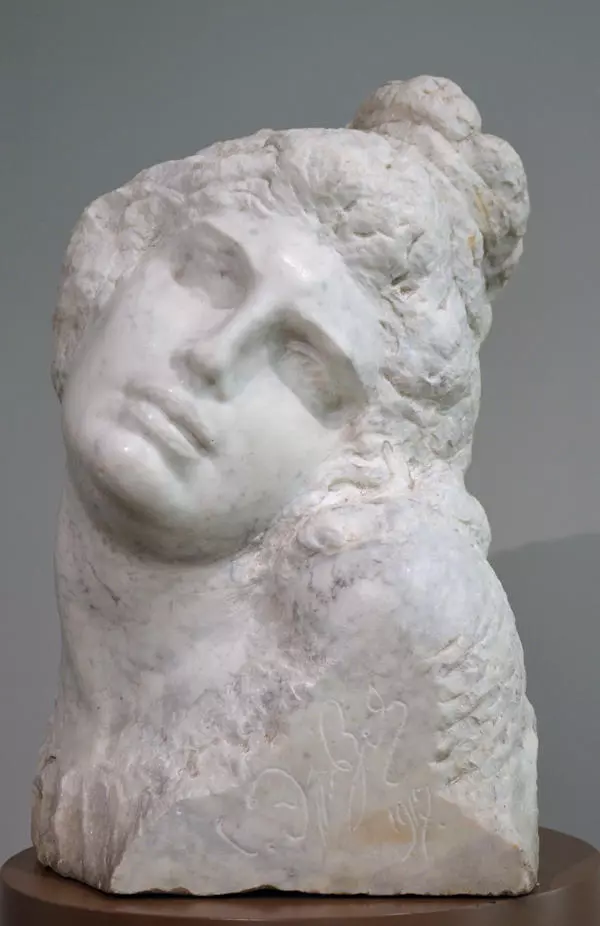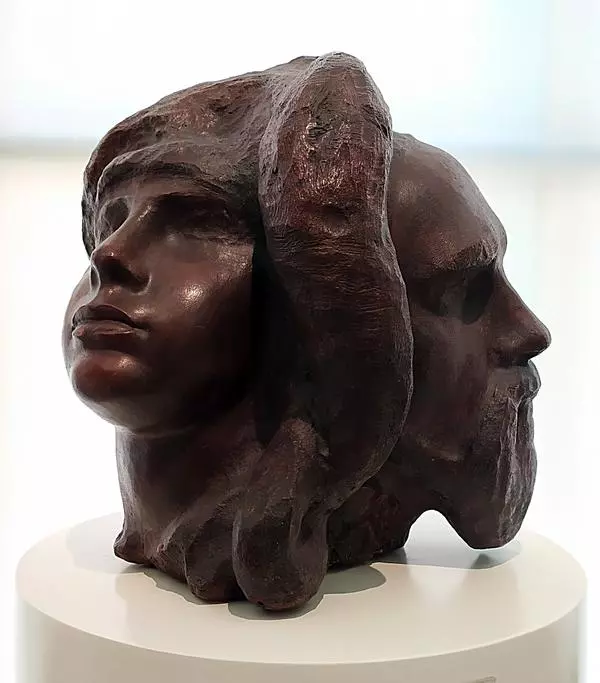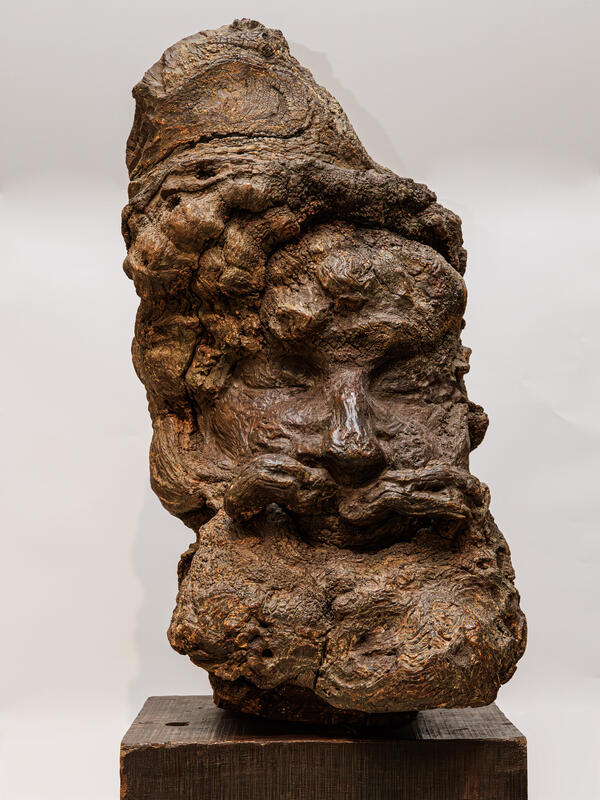Eve is one of the best works that Stepan Ersia created during his Urals period. The well-known Mordovian sculptor welcomed the revolution with enthusiasm, and joined Lenin’s Plan for Monumental Propaganda. However, even in those years the artist aspired for psychological treatment of the mythological characters, and added broad and symbolic meaning to them. The best-known monumental works of those years on the Bible topics include Calypso (marble), John the Baptist (cement), and Eve (marble).
Eve dated 1919 is not the first embodiment of the foremother of humanity by Stepan Erzia. In the marble sculpture dated 1917 (whose location is unknown), Eve is young, affecting, clearly embarrassed with the speech of the serpent. But two years later, the master produced a different treatment of the favorite character from the Bible, which originated from the folk, pagan perception of the world by the artist. The new work features Eve as a calm, confident, mature woman.
The monolithic statue is made of a large whole piece of marble. Eve’s figure seems unnatural at first glance, but the impression is deceptive, as the sculptor rendered the anatomical proportions of a female body absolutely correctly. The ponderous forms and special grace of Eve look somewhat pagan. The smooth ‘musical’ lines soften the visual massiveness of the sculpture and make it plastic and expressive.
The curvy exuberant body of the ‘foremother of all’ shows languor and huge lust for life that seeks materialization. Eve’s head on a long slender neck leans to her shoulder unnaturally low but still very gracefully. The figure forms a smooth curve and, despite the unusual posture, looks extremely vivid, full of slow motion, but is lacks balance or harmony.
The sculpture creates a feeling of instability, unrest, which is a plastic allegory of the character’s suppleness, susceptibility to influence, readiness for sin. Eve has a light smile on her lips. All turned to the serpent, she is listening to the snake of temptation with genuine pleasure. The end of the conversation is definitely close: very soon, Eve will not resist the seducement and will pick the forbidden fruit.
Stepan Erzia skillfully exposed the decorative features of the Ural marble, which is solid and coarse-grained. He made smart use of colors to emphasize the subject of the composition: warm, light, innocent body of the woman and a mane of darker gorgeous hair that links her to the serpent. Eve by Erzia is a visualization of the folk ideal of beauty, a vivid and humane image disclosing the whole essence of the mythological foremother contained in her name, which means ‘giving life’.
Eve dated 1919 is not the first embodiment of the foremother of humanity by Stepan Erzia. In the marble sculpture dated 1917 (whose location is unknown), Eve is young, affecting, clearly embarrassed with the speech of the serpent. But two years later, the master produced a different treatment of the favorite character from the Bible, which originated from the folk, pagan perception of the world by the artist. The new work features Eve as a calm, confident, mature woman.
The monolithic statue is made of a large whole piece of marble. Eve’s figure seems unnatural at first glance, but the impression is deceptive, as the sculptor rendered the anatomical proportions of a female body absolutely correctly. The ponderous forms and special grace of Eve look somewhat pagan. The smooth ‘musical’ lines soften the visual massiveness of the sculpture and make it plastic and expressive.
The curvy exuberant body of the ‘foremother of all’ shows languor and huge lust for life that seeks materialization. Eve’s head on a long slender neck leans to her shoulder unnaturally low but still very gracefully. The figure forms a smooth curve and, despite the unusual posture, looks extremely vivid, full of slow motion, but is lacks balance or harmony.
The sculpture creates a feeling of instability, unrest, which is a plastic allegory of the character’s suppleness, susceptibility to influence, readiness for sin. Eve has a light smile on her lips. All turned to the serpent, she is listening to the snake of temptation with genuine pleasure. The end of the conversation is definitely close: very soon, Eve will not resist the seducement and will pick the forbidden fruit.
Stepan Erzia skillfully exposed the decorative features of the Ural marble, which is solid and coarse-grained. He made smart use of colors to emphasize the subject of the composition: warm, light, innocent body of the woman and a mane of darker gorgeous hair that links her to the serpent. Eve by Erzia is a visualization of the folk ideal of beauty, a vivid and humane image disclosing the whole essence of the mythological foremother contained in her name, which means ‘giving life’.


